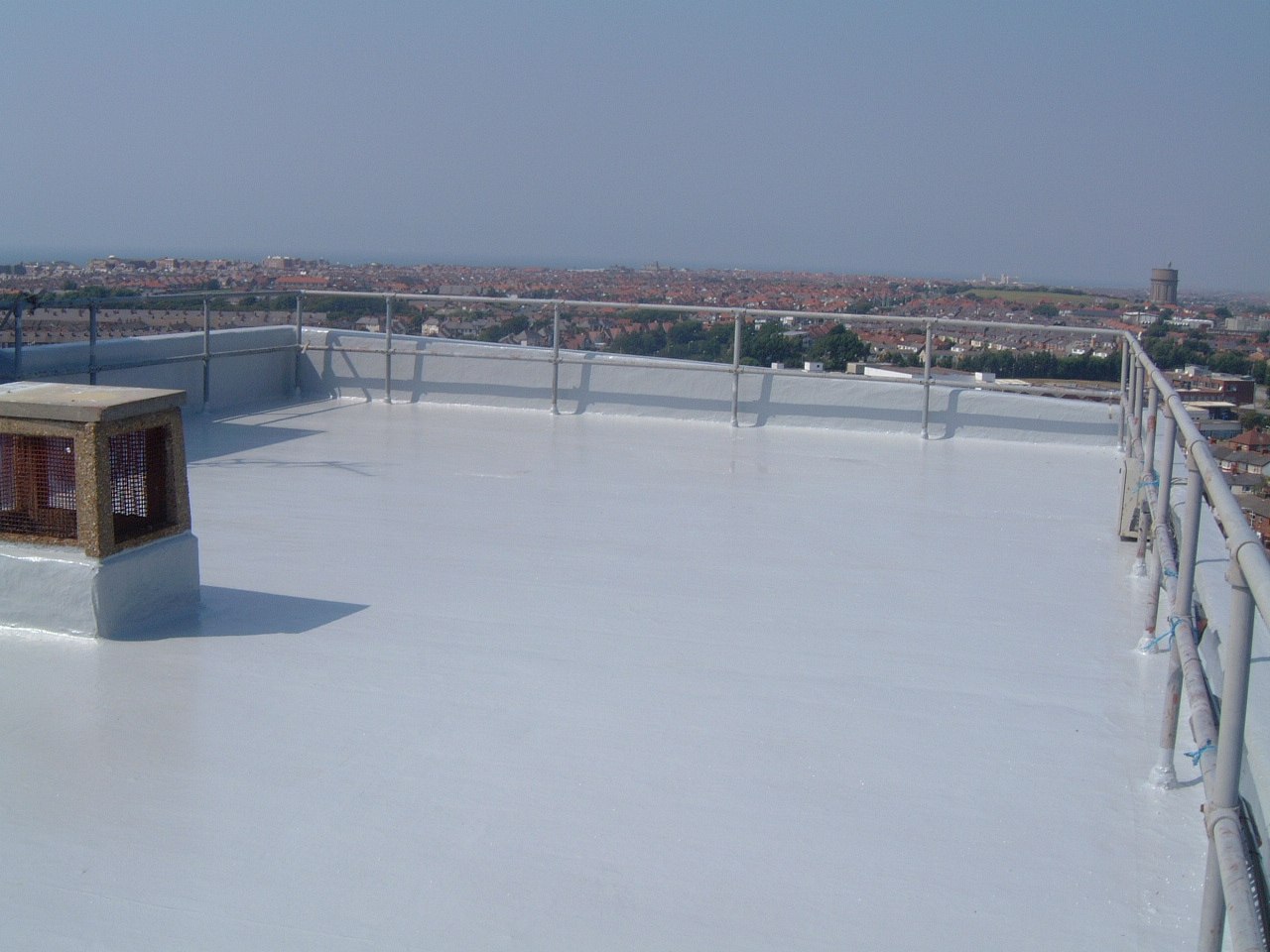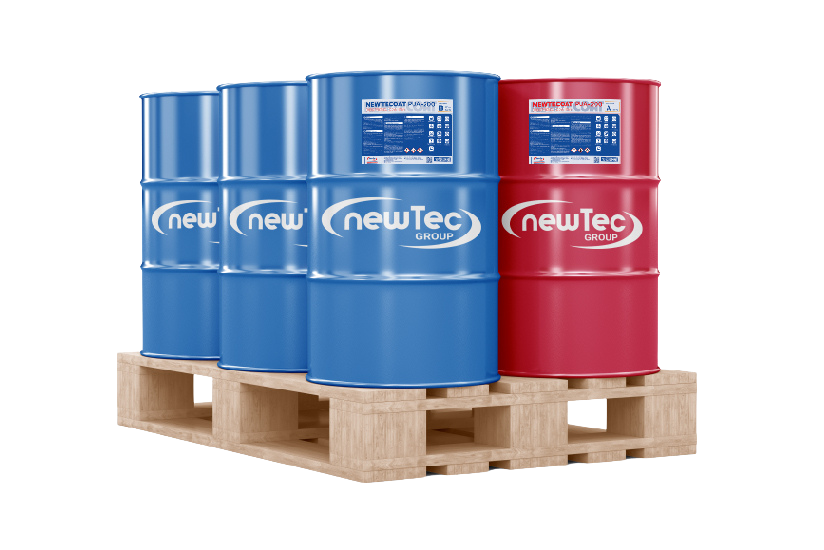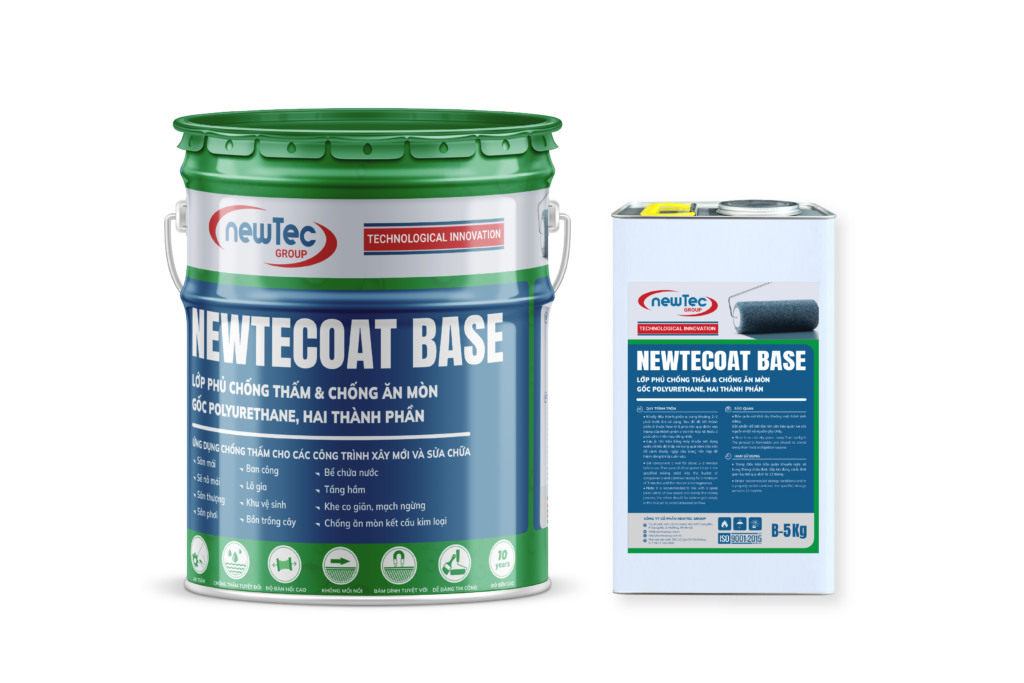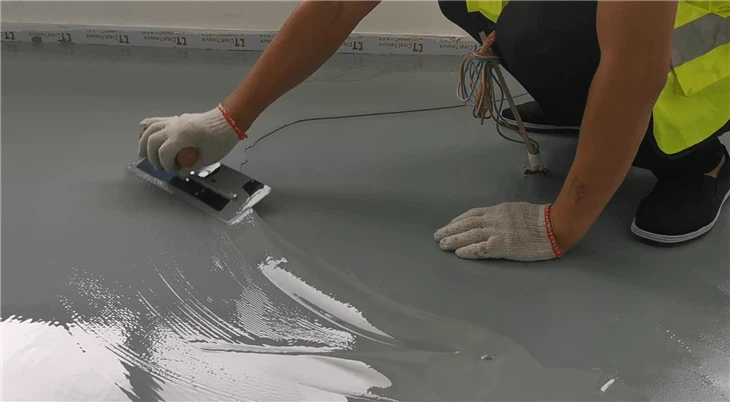If you’re looking for a reliable way to protect surfaces, you might want to consider polyurethane coating. This versatile material has been around for decades and is used in many industries. It offers a tough layer of protection that stands up to wear and tear, making it a popular choice for various applications. In this article, we will explore what polyurethane coating is, its benefits, and why it could be the right choice for your next project.
Key Takeaways
- Polyurethane coating is a durable protective layer formed from a chemical reaction between polyisocyanates and polyols.
- It offers excellent resistance to chemicals, weather, and abrasion, making it suitable for harsh environments.
- Common applications include industrial flooring, aerospace, and marine protection.
- There are different types of polyurethane coatings, including water-based and solvent-based, each with unique properties.
- Proper application and maintenance are crucial for maximizing the lifespan of polyurethane coatings.
Understanding Polyurethane Coating
Definition of Polyurethane Coating
So, what exactly is polyurethane coating? Well, it’s a liquid plastic that, once it dries, forms a super tough and resilient film. This film acts like a shield, protecting whatever’s underneath from getting beat up by wear and tear, nasty chemicals, and the elements. Think of it as a bodyguard for your stuff. The main ingredients are polyisocyanates and polyols, and when they react, they create this awesome polymer network. You can also throw in some extra stuff like curing agents and UV stabilizers to make it even better. It’s used for coating all sorts of things.

Polyurethane Coating
Formation Process of Polyurethane Coating
The magic happens when polyisocyanates and polyols get together and start linking up. This polymerization reaction creates long chains of molecules, which then form a strong, cross-linked network. It’s this network that gives polyurethane coatings their impressive strength and flexibility. It’s kind of like building a super strong web but with molecules. The process is pretty cool, and the result is a coating that can handle a lot of abuse. It’s a pretty versatile marine solution.
Key Properties of Polyurethane Coating
Polyurethane coatings have some seriously impressive properties. Here’s a quick rundown:
- Durability: These coatings can take a beating. They resist scratches, impacts, and everyday wear and tear like a champ.
- Chemical Resistance: Got spills? No problem. Polyurethane coatings can protect against all sorts of chemicals, oils, and solvents.
- Weather Resistance: Rain, shine, or snow, these coatings can handle it. They won’t fade or crack, even when exposed to UV radiation and temperature changes.
Polyurethane coatings are known for their abrasion resistance. Studies have shown they can withstand significantly more wear and tear than traditional epoxy coatings. This makes them ideal for high-traffic areas and demanding applications.
Here’s a table showing how polyurethane stacks up against other coatings in terms of abrasion resistance:
| Coating Type | Abrasion Resistance (Taber Abraser, mg loss) |
|---|---|
| Polyurethane | 10-20 |
| Epoxy | 30-50 |
| Acrylic | 60-80 |
| Alkyd | 80-100 |
Benefits of Polyurethane Coating
Durability and Longevity
Polyurethane coatings are known for their exceptional durability. They can withstand a lot of wear and tear, making them a great choice for surfaces that see heavy use. Think about it: you want something that lasts, right? Polyurethane delivers. They resist scratches, impacts, and general wear, which means less frequent repairs and replacements. This is a big win for saving money in the long run.
Chemical and Weather Resistance
One of the standout features of polyurethane is its resistance to chemicals and weather. It’s like a shield for your surfaces. Spills? No problem. Harsh sunlight? Bring it on. Polyurethane can handle it. This makes it ideal for industrial settings where chemical exposure is common, or for outdoor applications where the coating needs to withstand the elements. For example, polyurethane coatings are often used in environments where other coatings would quickly break down.
Flexibility and Adhesion
Polyurethane coatings aren’t just tough; they’re also flexible. This is important because surfaces expand and contract with temperature changes. A rigid coating might crack, but polyurethane can bend and flex without losing its integrity. Plus, it adheres well to a variety of materials, including metal, wood, and concrete. This versatility makes it a go-to choice for many different projects. Here’s a quick rundown:
- Excellent adhesion to various substrates
- Maintains flexibility over time
- Reduces the risk of cracking or peeling
Polyurethane’s ability to remain flexible while providing a strong, protective layer is a key reason why it’s so widely used. It adapts to the movements of the underlying material, ensuring long-lasting protection and preventing common coating failures.
Common Applications of Polyurethane Coating
Industrial Flooring
Polyurethane coatings are a go-to choice for industrial floors because they can take a beating. They resist abrasion, chemicals, and heavy traffic, making them ideal for factories, warehouses, and even bowling alleys. Think about it: those shiny bowling lanes? Often polyurethane. It’s not just about looks; it’s about lasting protection. Polyurethane coatings are also used in aircraft hangars and auto body shops because of their durability.
Aerospace and Aircraft
Polyurethane coatings play a vital role in the aerospace industry. These aerospace-grade coatings protect aircraft from harsh conditions and improve fuel efficiency. While polyurethane foams get a lot of attention in aerospace, the coatings are essential for safeguarding surfaces against corrosion, UV radiation, and extreme temperatures. The United States Navy and Marine Corps use polyurethane coatings.
Marine and Pipeline Protection
When it comes to protecting marine vessels and pipelines, polyurethane coatings are a solid choice. They seal marine hulls, protecting them from corrosion and the elements. Polyurethane is also used to protect gas and oil pipelines, especially those underwater. Its ability to withstand high pressure and harsh environments makes it perfect for this application. Polyurethane is used in marine applications to secure and seal diving equipment.
Polyurethane coatings are workhorses in industries needing protection from the elements. They offer a blend of durability, chemical resistance, and flexibility that makes them suitable for a wide range of demanding applications. This makes them a cost-effective solution in the long run.
Types of Polyurethane Coatings
Polyurethane coatings aren’t just one-size-fits-all. There are a bunch of different types, each with its own set of properties and best uses. It’s kind of like choosing the right tool for a job – you wouldn’t use a hammer to screw in a screw, right? Same deal here. Understanding the different types helps you pick the perfect coating for your project. Let’s take a look at some of the most common ones.
Water-Based Polyurethane
Okay, so water-based polyurethane is the friendlier option, especially if you’re worried about fumes and the environment. It uses water as its main solvent, which means way less of those nasty VOCs (volatile organic compounds) floating around. Cleanup is a breeze too – just soap and water! It’s generally a good choice for indoor projects where you want to minimize odors and keep things eco-conscious. However, it might not be as tough as some of the solvent-based options when it comes to heavy-duty wear and tear. You can use coating for floors.
Here’s a quick rundown:
- Lower VOCs, making it more environmentally friendly.
- Easy cleanup with water.
- Good for interior projects like furniture and floors.
- May not be as durable as solvent-based options for high-traffic areas.
Solvent-Based Polyurethane
Solvent-based polyurethane is the heavy-duty stuff. It uses solvents to dissolve the polyurethane resins, which gives it some serious advantages in terms of durability and resistance. It’s like the bodybuilder of the polyurethane world. It can handle a lot more abuse, chemicals, and wear. The downside? Those solvents can be pretty strong-smelling and not so great for the environment. You’ll want to make sure you have good ventilation when you’re working with this stuff. It’s often used for things like industrial flooring and marine applications where toughness is key.
- Extremely durable and resistant to wear and tear.
- Excellent chemical resistance.
- Stronger odor and requires good ventilation.
- Less environmentally friendly due to solvent content.
UV-Cured Polyurethane
UV-cured polyurethane is where things get a little more high-tech. Instead of air drying, this type of coating cures (hardens) when exposed to ultraviolet (UV) light. This process is super fast, which makes it great for industrial applications where speed is important. It also tends to create a very hard, durable finish. Think of it like a superhero that gets its powers from the sun. It’s often used on things like automotive parts and electronics where a tough, scratch-resistant finish is needed. It’s a good option for water-based polyurethane.
UV-cured polyurethanes offer rapid curing times, enhanced durability, and excellent scratch resistance. They are ideal for high-volume manufacturing processes where speed and performance are critical. The initial investment in UV curing equipment can be higher, but the long-term benefits often outweigh the costs.
Here’s a simple comparison table:
| Feature | Water-Based | Solvent-Based | UV-Cured |
|---|---|---|---|
| VOCs | Low | High | Low |
| Durability | Moderate | High | High |
| Cure Time | Slow | Moderate | Fast |
| Environmental Impact | Lower | Higher | Lower |
Application Techniques for Polyurethane Coating
Applying polyurethane coating isn’t just slapping some liquid on a surface; it’s a process that demands attention to detail. I remember when I first tried it, I thought it would be as easy as painting a wall. Boy, was I wrong! From prepping the surface to getting the right finish, there’s a lot to consider. Let’s break it down.

Application Techniques
Surface Preparation
Surface prep is where it all begins. If you skip this step, you’re basically setting yourself up for failure. Think of it like this: you wouldn’t build a house on a shaky foundation, right? The same goes for polyurethane. The surface needs to be clean, dry, and free of anything that could mess with adhesion. For example, if you’re working with metal, you’ll need to remove any rust or grease. Concrete? Make sure it’s clean and maybe even etched to give the polyurethane something to grab onto. I once rushed this step and ended up with a peeling mess a few weeks later. Lesson learned!
Application Methods
Okay, so you’ve got your surface prepped. Now, how do you apply the polyurethane? You’ve got a few options here, each with its pros and cons. Brushing is good for small areas or detailed work, but it can leave brush marks if you’re not careful. Rolling is faster for larger surfaces, but you need to make sure you’re using the right kind of roller to avoid bubbles. And then there’s spraying, which gives you the smoothest finish but requires special equipment and a bit of skill. I usually go with a combination of brushing and rolling, depending on the project. For polyurethane floors, pouring the finish into a lined paint tray and using an applicator pad works wonders.
Curing and Drying Process
So, you’ve applied the polyurethane. Now what? Well, you wait. Curing and drying times can vary depending on the type of polyurethane you’re using, the temperature, and the humidity. It’s important to follow the manufacturer’s instructions here, or you could end up with a sticky, uncured mess. I usually give it at least 24 hours between coats, and sometimes longer if it’s humid. And whatever you do, don’t rush it! Patience is key to getting a durable, long-lasting finish.
I’ve found that keeping the area dust-free during the curing process is super important. Even tiny particles can get stuck in the finish and ruin the look. I usually cover the area with plastic sheeting to keep dust and debris out.
Maintenance of Polyurethane Coating
Routine Cleaning
Keeping your polyurethane coating clean is pretty straightforward, but you can’t skip it if you want it to last. Regular cleaning prevents dirt and grime from building up, which can dull the finish and even cause damage over time. I usually just grab a soft cloth and some mild soap and water. Harsh chemicals? Abrasive cleaners? Hard pass. Those can scratch or eat away at the coating, which is exactly what we’re trying to avoid. Think of it like washing your car—gentle is always better. For floors, a microfiber mop works wonders. Just ensure you wring it out well so you’re not leaving puddles.
Repairing Damaged Areas
Okay, so you’ve got a scratch or a chip in your polyurethane coating. Don’t panic! Small imperfections are pretty common, especially in high-traffic areas. The good news is, that you can usually fix them without too much hassle. For minor scratches, sometimes a simple buffing with a soft cloth can do the trick. If it’s a bit deeper, you might need to lightly sand the area with fine-grit sandpaper. Clean it up, and then apply a thin coat of polyurethane. Make sure to feather the edges so it blend in seamlessly. For larger areas, you might need to do a bit more prep work, but the principle is the same: clean, sand, and reapply. It’s all about taking your time and being patient. Here’s a quick guide:
- Clean the damaged area thoroughly.
- Lightly sand the imperfection.
- Apply a thin, even coat of polyurethane.
Reapplication Guidelines
Eventually, even with the best care, your polyurethane coating will start to show its age. High-traffic areas might become worn, and the finish might lose its luster. That’s when it’s time to think about reapplication. Before you jump in, give the surface a good cleaning. Then, lightly sand it to create a smooth surface for the new coat to adhere to. This is important for proper adhesion. Apply a thin, even coat of polyurethane, following the manufacturer’s instructions. And remember, patience is key. Let each coat dry completely before applying the next. How often you need to reapply depends on a few things, like how much wear and tear the coating gets and the type of polyurethane you use. But generally, reapplying every few years can keep things looking fresh and protected.
Think of polyurethane maintenance like taking care of a good pair of shoes. Regular cleaning keeps them looking sharp, repairing scuffs prevents further damage, and eventually, you might need to get them resoled. It’s all about extending their lifespan and keeping them in top condition.
Considerations When Choosing Polyurethane Coating
Choosing the right polyurethane coating can feel overwhelming. There are so many options, and each project has unique needs. Let’s break down some key things to think about before you make a decision.

Considerations When Choosing Polyurethane Coating
Environmental Impact
Polyurethane coatings can vary significantly in their environmental footprint. Some contain high levels of volatile organic compounds (VOCs), which contribute to air pollution. Opting for water-based or low-VOC formulations can significantly reduce your project’s environmental impact. Consider these points:
- VOC Content: Check the product’s technical data sheet for VOC levels. Lower is better.
- Manufacturing Process: Look for manufacturers committed to sustainable practices.
- Disposal: Understand the proper disposal methods for leftover coating and containers.
Health and Safety Concerns
Working with polyurethane coatings requires caution. Some formulations contain isocyanates, which can be respiratory irritants and sensitizers. Always prioritize safety by:
- Wear appropriate personal protective equipment (PPE), including respirators, gloves, and eye protection.
- Ensuring adequate ventilation in the work area.
- Following the manufacturer’s safety data sheet (SDS) guidelines.
It’s important to remember that even low-VOC coatings can pose some health risks. Always read the product labels carefully and take necessary precautions.
Cost-Effectiveness
Cost is always a factor. But it’s important to look beyond the initial price tag. A cheaper coating might require more frequent reapplication, ultimately costing you more in the long run. Consider these factors when evaluating cost-effectiveness:
- Material Costs: Compare the price per gallon or liter of different coatings.
- Application Costs: Factor in the labor costs for surface preparation and application. Polyurethane wood finishes can be a great option.
- Lifespan: Estimate the expected lifespan of the coating and the frequency of reapplication.
- Maintenance Costs: Consider the costs associated with cleaning and repairing the coating over its lifespan.
Here’s a simple table to illustrate the long-term cost differences:
| Coating Type | Initial Cost | Lifespan | Reapplication Frequency | Long-Term Cost (10 years) |
|---|---|---|---|---|
| Cheap Polyurethane | Low | 2 years | Every 2 years | High |
| Premium Polyurethane | High | 5 years | Every 5 years | Medium |
Final Thoughts on Polyurethane Coatings
In summary, polyurethane coatings are a solid choice for anyone looking to protect surfaces while also adding a nice finish. They’re tough, resist wear and tear, and can handle a variety of environments. Whether you’re working on floors, machinery, or even outdoor projects, these coatings can really make a difference. Sure, there are some downsides, like the fumes and potential UV damage, but the benefits often outweigh the negatives. If you want something that lasts and looks good, polyurethane might just be the way to go for your next project.
Read more: What is Polyurethane Laminate and How It Revolutionizes Waterproof Fabrics?





You may also be interested in
Understanding What Polyurethane Foam When Burned Gives Off: Health Risks and Safety Precautions
Polyurethane foam is commonly used in many products, from furniture to insulation. However, when it
May
Exploring the Question: Is Polyurethane Durable Enough for Everyday Use?
Polyurethane is everywhere, from the cushions on your couch to the insulation in your walls.
May
Exploring the Truth: Is Polyurethane Eco Friendly in Today’s World?
Polyurethane is everywhere these days, from your furniture to your sneakers, but is polyurethane eco
May
Trusted Polyurea Manufacturer for Philippines Supporting Industrial and Construction Excellence
The polyurea market in the Philippines is poised for significant growth from 2025 to 2031,
May
The Role of a Reliable Polyurea Manufacturer for Malaysia in Enhancing Construction Quality
Polyurea coatings have become increasingly vital in Malaysia’s industrial and construction sectors due to their
May
Reliable Polyurea Manufacturer for Cambodia Supporting Industrial and Construction Growth
Polyurea coatings are increasingly recognized for their vital role in the industrial and construction sectors,
May
Meet the Leading Polyurea Manufacturer for Thailand Powering Industrial Applications
Polyurea coatings have become an essential solution in various industrial sectors due to their exceptional durability, rapid curing times, and resistance to
May
Exploring Polyurea Manufacturer & Custom Coating Options in Southeast Asia
Polyurea coatings have become a game-changer in the protective coatings industry due to their remarkable
May